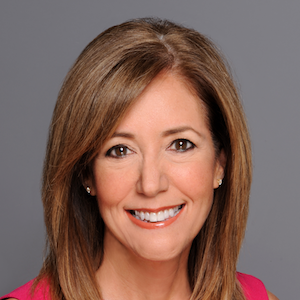
Ellen Rogin, CPA, CFP®, and The New York Times bestselling author of Picture Your Prosperity: Smart Money Moves to Turn Your Vision into Reality joins the show to help motivate listeners to reach their financial goals.
You can do it!
Ellen and Doug talk about the effectiveness of imagining your ideal life as a motivator towards making good decisions.
Ask yourself, “What would my ideal retirement look like? How would I feel?” These questions are important when setting financial goals. For most people, this exercise motivates them to make smart money decisions so they can turn their daydream into reality. Ellen encourages the use of a “vision board” for goal setting. She expounds on what a vision board is and how a future retiree can use it to illustrate their financial and life goals.
Learn how your imagination can help you make smarter financial decisions!
Do you have a big financial decision coming up? Make a plan!
Doug shares the story of a couple who didn’t plan well for selling their house. He recounts the painful lesson the couple learned. This cautionary tale should be a reminder that, no matter what your circumstances, when you need to make a big investment or purchase, you should always have a plan in place.
If you are interested in Ellen Rogin’s Picture Your Prosperity: Smart Money Moves to Turn Your Vision into Reality, visit her website. You can also find her on Twitter, Facebook, and LinkedIn.
If you’re not already receiving updates on new episodes, sign up now, and as a special bonus, receive Doug’s free ebook The Retirement Planning Book.
Watch The Motivation You Need to Make Good Financial Decisions on YouTube.
Read the TranscriptInterview with Ellen Rogin
Why is it important to picture your prosperity, and how can you do this in a practical way? Ellen Rogin, who’s a CPA, author and speaker, shares her thoughts on this.
Douglas Goldstein: I’m very excited to have on, The Goldstein on Gelt Show, Ellen Rogin, who is a CPA, meaning she’s an expert in tax. She’s also a CFP like I am; a Certified Financial PlannerTM.
She’s The New York Times bestselling author of Picture Your Prosperity: Smart Money Moves to Turn Your Vision into Reality.
Ellen, a lot of people talk about imagining, but you use the word “picturing”. Does that help make you more successful?
Does “Picturing” Help Make You More Successful?
Ellen Rogin: Picturing is one of the most powerful tools that we have. If you think about it, people think in pictures.
They don’t think in charts and graphs, or even numbers. We have the ability to focus our brain in ways that have things show up in sometimes miraculous ways. It’s a lot about brain science in terms of why this works.
Douglas Goldstein: Explain to me what that means: to picture financial planning.
What Does It Mean to Picture Financial Planning?
Ellen Rogin: You’ve probably seen athletes before the Olympics or before a competition go through mental rehearsal. It’s well established that that’s a powerful tool. Well, this can work for other parts of your life as well.
It has to do with a part of your brain called the “reticular activating system,” the RAS. It’s about the size of your pinky and it’s at the base of your skull. It helps to filter information.
For example, if you are at a party and someone yells, “Doug” from across the room, you would pay attention to that, but maybe not all the clinking glasses or the air conditioning unit.
When you have a picture in your mind of what you want to accomplish for yourself, then you start to filter and notice when things show up for you.
Douglas Goldstein: Let’s try dive into that in a practical sense. I think a lot about retiring. It’s not that I’m ready to yet, but it’s not that far anymore.
I’ve been working 25 years, so it must be around the corner. I begin to think about it. My wife and I talk about what we would do and the hobbies we have. How do we turn that into something practical?
Practical Financial Picturing
Ellen Rogin: There are a couple of ways you can do that. Part of it is thinking in incredible detail about what that will look like for the two of you, or for yourself. What will you be doing when you retire? Where will you live? Imagine with incredible detail what that’s like, feeling what it will feel like to do that.
Then, with that image in mind, it helps to set it into motion. It’s like a visual financial plan, but it also requires action.
You can’t just sit around waiting for the universe to provide and picturing this lovely retirement by the water. It might be that image, but then taking the right actions to actually have that happen.
What I think sometimes happens when people think about their retirement is they just go, “Oh yeah. I want to be 65 and I want to have x amount of dollars to live on. I just want to get out of this job.”
They’re not thinking of what they’d actually be doing. That emotional component, that feeling that helps put this huge “why” behind them having a financial advisor or going online. They aren’t doing some kind of actual planning behind it.
Douglas Goldstein: Do you think it motivates people to do it? In other words, if someone who imagines being on the beach or travelling or building furniture in his shed, because that’s something he really wants to do, is that going to allow him to get a little more tachlis, a little more nuts and bolts, and say, “I realize why I need to put aside $2,000 a month to save for the next 20 years”?
Ellen Rogin: I think it helps to add excitement behind it, for sure. If someone is not a good saver, and that’s just not part of their emotional makeup, just picturing it isn’t going to be the only thing they need to do.
What I found, in terms of sharing these ideas in groups that I speak to or with individuals, is that when you can start to imagine something in incredible detail, it adds excitement to it; it gives you a why.
That is motivating to people. It is the reason you put money away for down the road versus spending it today. You can actually do this with real images too, to keep reminding yourself of this.
Using Real Images for Financial Picturing
Douglas Goldstein: What do you mean?
Ellen Rogin: One of the things that I like to speak about is creating a real prosperity picture for yourself.
Maybe you are familiar with creating a vision board. It’s that idea of taking images that represent goals that you have, then getting in touch with what they mean to you.
The difference with the prosperity picture is putting it in a different frame. The goals that you have, or the images that represent things that you want to have in the future, go on the top part of the right side of your board.
Images that represent things you want now would go on the left side. Things that require money would go on the top. Things that require less money would go on the bottom.
Let me give you an example. I have an image of an airplane on mine. To me that represents this idea of taking a whole year off and travelling the world. It probably would require money to do that, unless I get hired to speak all over the world, but let’s say it requires some money.
It isn’t going to happen probably till five years or longer, so that would be on the upper left hand side of my board.
Then the idea is, with these images on there, I can look at them daily, which I do. I can then create the basis of a visual financial plan.
If I know I want to do that, how do I make that happen? Those are things that I can work with to try to turn that into an actual reality.
Douglas Goldstein: Ellen, explain to me a little bit more, this concept of a vision board. What does it look like? Is this a piece of paper? Is this a big piece of cardboard? Is it on the computer?
What Does the Vision Board Look Like?
Ellen Rogin: It can be any kind of board that you want. You can take a piece of paper and divide it into four sections. It can be on a board. Mine is a little bit bigger than that and it’s a little bit on cardboard.
In the book, we actually put pictures in there to get people started. You can take pictures from actual photos that you have, or magazines, or just find them online.
Once you find these images that represent things that you want to see show up in your life, then you put them on the board, based on how much money it will take to achieve that goal and when you want to have it.
Douglas Goldstein: I just want to make sure that we’re converting this into something practical.
Let’s say I have a board like yours and I put up an airplane because I want to be doing some travelling. What’s the next step in order to convert that into something actionable?
Ellen Rogin: Where do you want to go on your trip?
Douglas Goldstein: I would like to go to New Zealand.
Ellen Rogin: When do you want to go?
Douglas Goldstein: I would like to go in about four years.
Ellen Rogin: It’s probably on the upper part because it would require some money. Probably on the left side of your board because that’s for goals that you want to have happen five years or less.
That’s where it would be on your board. Then I would say, “Okay, what’s your first step to figuring out how to make this happen?” How much it would cost?
Douglas Goldstein: I think for a trip with my wife and some kids, we’re easily looking at $15,000 to $20,000. It’s an expensive trip.
Ellen Rogin: $15,000 to $20,000. As a planner, you could start to say, “Okay, do we have money now? If I’m going to save that over the next four years, what do I need to do each month to make that happen?”
Douglas Goldstein: What’s going on here is you are helping the client, or the investor, or the planner to see what it is that he wants. At the end of the day, there is still a money component to this.
Ellen Rogin: Yes. The interesting thing is for many of the goals there are, but maybe you had on your board, starting a meditation practice. Maybe that requires a little money but not much, or maybe you already have one but you want to do it more.
Douglas Goldstein: I want to do it in New Zealand though. That’s the problem.
Ellen Rogin: Okay. That part of someone meditating might go on the lower part of your board, which doesn’t require any money.
The interesting thing is when we do workshops, sometimes people go, “Oh my gosh! I didn’t even realize so many of the things I want don’t even require money.”
There is appreciation for that. The ones that do, you can turn into a plan. The other ones, go for it. Make it happen.
Douglas Goldstein: Ellen, unfortunately we are just about out of time. Tell me, how can people follow you and follow your work?
Ellen Rogin: A great place to find some resources is at ellenrogin.com. There are all sorts of resources there. I am on Facebook, Twitter, and LinkedIn.
I’d love to connect, and I’d love to hear what people are up to in terms of how they are visioning their goals. That would be the best place to find me.
Douglas Goldstein: Okay. Ellen Rogin, thanks so much for taking the time.
Ellen Rogin: Thank you so much for having me.










